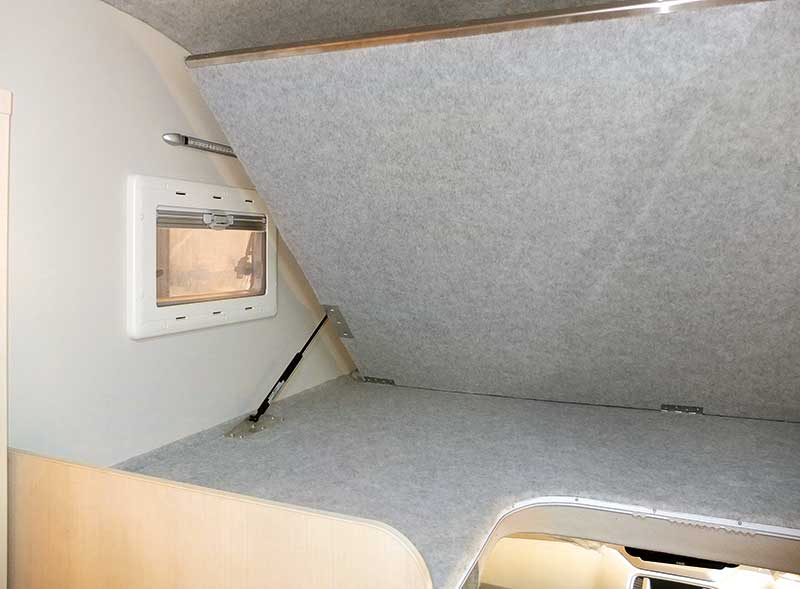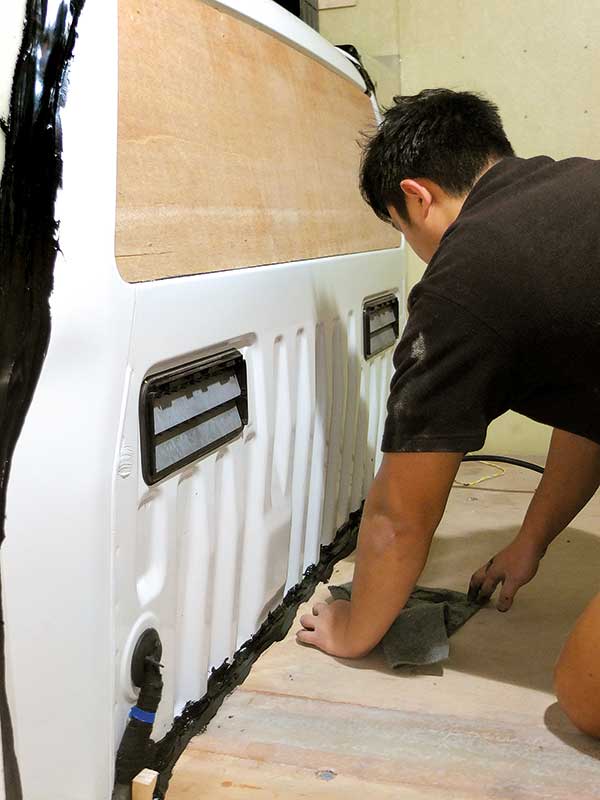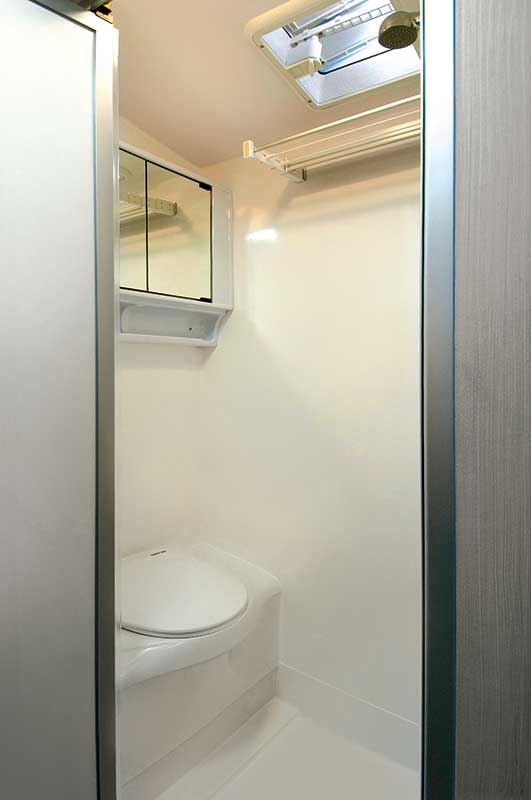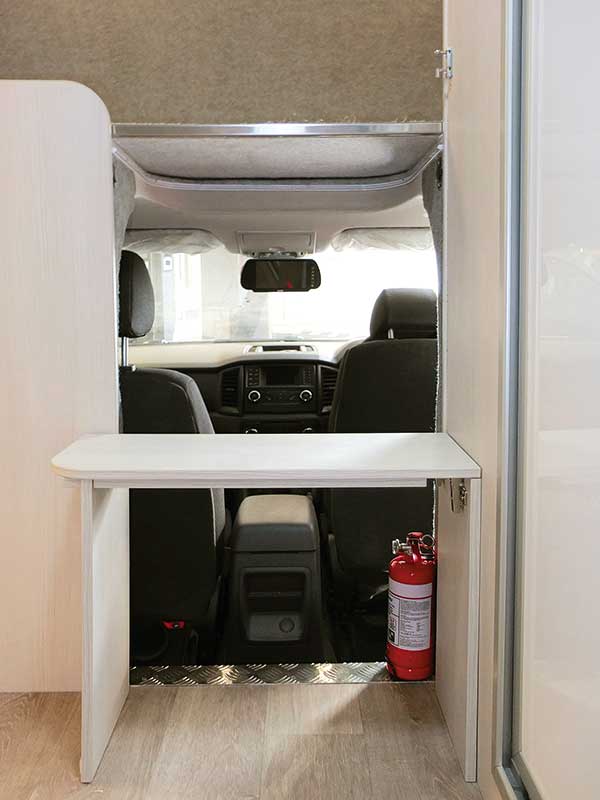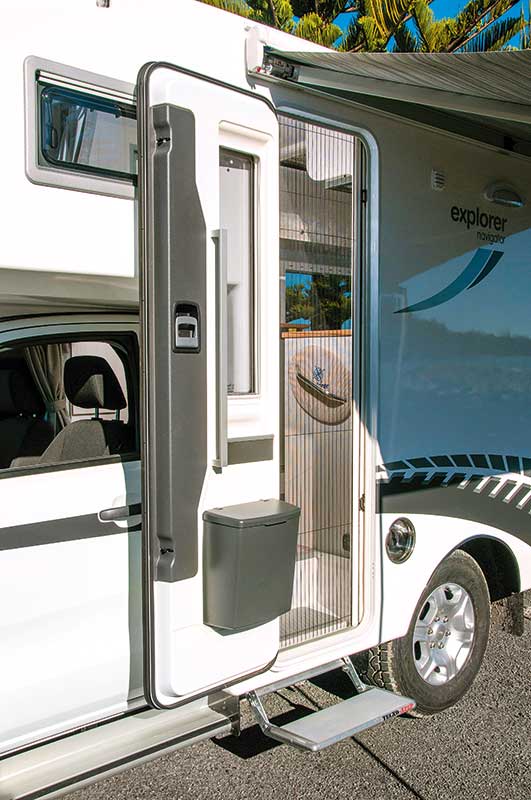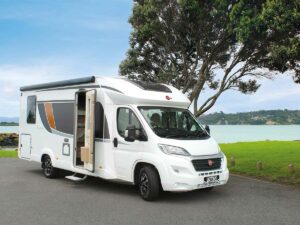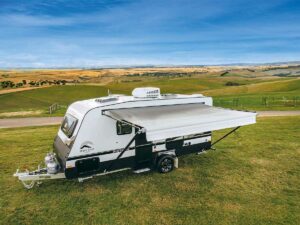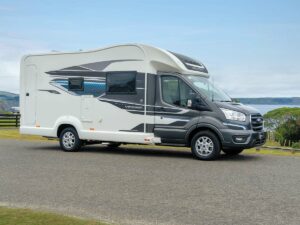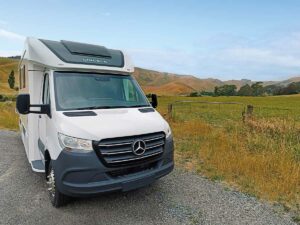Explorer Motorhomes entered the New Zealand motorhome market around 10 years ago, marketing two models—Navigator and Compass.
In 2014, Simon Bishop and Mike Nicklin, in partnership, acquired Explorer Motorhomes. They’d both been involved with the previous owner. Mike, who has been in the motorhome industry for more than 30 years and whose other business is Frontier Motorhomes, built the Explorer range under contract from Explorer’s inception.
Simon, who is involved in four-wheel drive sport and who’s been the owner of a plumbing and gas-fitting business for 21 years, spent three years helping market the Explorer range at motorhome shows. So from the outset, they were both familiar with the product and its potential.
Since the ownership change, from its small but steady 2014 base, the business has flourished, with sales doubling. You might say that is to be expected. After all, the motorhome market has been buoyant over the past three years.
But it takes more than that to keep a steadily increasing stream of business alive. What is the secret to their success? Part of the reason lies in the fact that the Explorer Motorhome range—the Navigator and its siblings (the Compass and the newer Frontier Backpack)—has two unique features in common.
They are the only New Zealand-manufactured motorhomes mounted on a pick-up cab/chassis, and they are available with four-wheel drive. But that is only part of the secret.
Custom-built
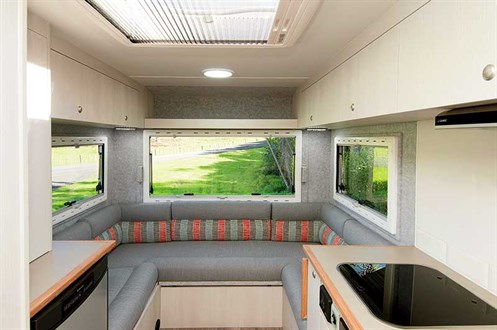
I met Simon and Mike on a rare sunny day in the first week of July at the Frontier Motorhomes factory in Dairy Flat just north of Auckland. At the time, a couple of Navigator 2017 models built on Ford Rangers 4x4s were being fitted out for their new owners.
One, an automatic gearbox model, was being fitted with all the comforts of home. It would be towing a boat to remote river locations and then used as an evening refuge after busy days spent on the river. All up, this package will cost a shade under $170,000 on the road.
The other, a manual gearbox model, while not so lavishly fitted out, was still an impressive piece of kit. This owner enjoys solitude in the remoter parts of New Zealand where he can tramp and mountain bike to his heart’s content.
His personalised package will set him back around $150,000, a more modest increase on the basic manual gearbox on road package of $141,900.
And this is an important part of the Explorer’s appeal. The start price includes all the basics needed to ‘go bush’ but there is a suite of additional items you can choose from to personalise your motorhome.
Simon says since he and Mike took over, no two Navigators have been built to the same specification.
External upgrades
As we walked around the 2017 Navigator, Simon showed the changes and improvements that he, Mike, and the coach-building team at Explorer had made to the bodywork.
A couple of them—the running light housing on each side of the Luton front and the removal of the sharp corner above the cab doors—are quite subtle.
Others such as the swage line creating the hint of a skirt at the bottom of the side panels and the revised treatment of the rear panel are more significant.
Combined, these changes release an extra 60mm of interior length without affecting the overall length of the Explorer.
Weight is a critical factor. More important than the overall weight is the maximum weight the rear axle is permitted to carry. To keep the weight down, all interior joinery is built from waterproof ‘Featherlite’ laminate surfaced plywood.
The body is foam sandwich construction—GRP sheet both sides of a closed cell foam core with an overall thickness of 25mm. Lightweight and strong.
Once the bathroom moulding, the wheel arch covers, and the internal fibreglass steps are installed, the interior cabinetry is glued/screwed into place enhancing the rigidity of the body even more.
A bigger bathroom
Feedback from owners indicated the bathroom was a tad too small, so in this year’s model, the bathroom is 100mm longer (hence the need for more interior length).
As before, it has an electric flush Thetford bench style C400 cassette toilet that sits below a wall-mounted medicine cabinet, a corner handbasin and shower handpiece on a slide rail, and an expanding clothes rack on the wall just below the roof hatch. The onboard heater, an Eberspacher diesel, has an outlet in the shower wall, so the bathroom can double as a drying room for wet gear.
A practical kitchen
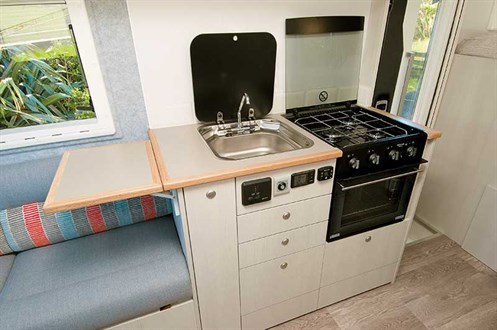
Practical best describes the kitchen, with its useful benchtop made better still by the lift-up extension and convenient pull-out pantry below.
A gas oven and three-burner hob means you can prepare a host of meals from simple to the most sublime. Above the hobs, a range-hood handles ventilation issues.
Plenty of cupboards and lockers provide storage for your weekly (or maybe monthly) supermarket shopping. And I hear Simon reminding me, “Don’t forget the soft-close drawers.”
In a bold move, Explorer has gone away from the ubiquitous three-way fridge and opted for the two-wayWaeco 136-litre fridge/freezer (12 volts /240 volts).
To compensate, they have beefed up the house battery/solar panel/regulator to cope with the extra 12-volt DC load (think 300 watts of solar panel, a genuine150a/hr house battery, and the latest CTEK D250SA regulator with a SmartPass 120 for additional current flow).
LPG use reduces under this regime, meaning bottle life extends and/or refill requirements diminish. And note that the LPG bottle is a weight-saving 5kg capacity alloy model.
Bedroom
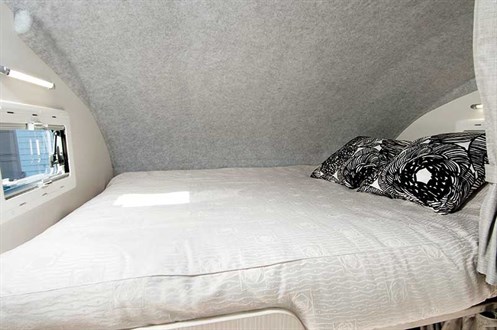
At 2000mmx1500mm, the Luton bed above the cab offers a sleep space for all but the very tall. Being so much closer to the floor than other Luton beds makes it so easy to enter and exit.
Stepping up onto the single, wide-access platform allows you to sit on the edge of the bed before swinging your legs up and over into bed. To exit, just reverse the procedure.
Once in bed, there is room to sit up, lights to read, and an opening window on each end for ventilation. It’s a great setup.
Access through to the cab from the habitation area is a comfortable crawl through rather than a walk through, and lifting the Luton bed out of the way makes it easier still. Gas strut assistance helps with the lifting.
A second sleeping space can be set up in the rear lounge. Pull-out slats form the base and the cushions rearrange to form the mattress.
Otherwise, the rear area is a spacious lounge that converts to a dinette at mealtimes. It is just a matter of popping the freestanding oval dining table on its pedestal and you are in business.
Freedom camping ready
All Navigators are certified self-contained and equipped for freedom camping with 95-litre fresh and 80-litre grey water tanks fitted with monitors.
The rear boot locker provides external storage for other essentials, such as barbecues, chairs, tools, and wheel chocks as well as other indulgences, such as golf clubs, skis, and fishing rods.
Verdict
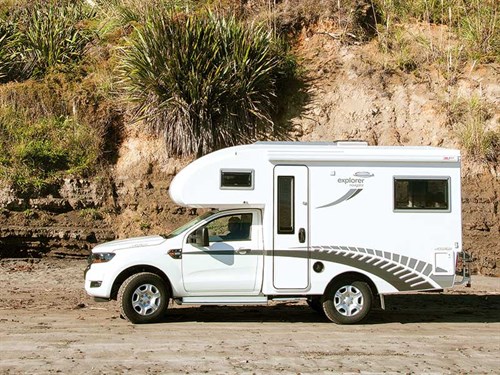
At the time I visited, no Navigators were available for road testing, so be sure you take a test drive in one before you part with your money.
Ford Rangers are currently the best-selling utility in New Zealand, so there is a pretty good chance it will pass your test with flying colours.
Constant change sums up the secret of the Navigators success—evolution not revolution; replacing old equipment with newer, up-to-date quality products; hearing customer feedback and acting on it; and a desire to improve the design, the construction methods, and equipment installed.
So the Navigator is as good as it can be.
The two-wheel drive Mazda BT50 turbo diesel six-speed manual version starts at $130,500.
The four-wheel drive Ford Ranger turbo diesel six-speed manual version starts at $141,900.
Explorer Navigator specifications
Berths: 4
Overall length: 5900mm
Overall width: 2980mm
Overall height: 2950mm plus sat. dish
Freshwater capacity: 95L
Grey water capacity: 80L
GVM: 3200kg
Price: $130,500 onwards (Mazda BT50); $141,900 onwards (Ford ranger)
Pluses
- Mounted on a great vehicle—Ford Range four-wheel drive auto
- Great example of a bed over the cab
- Excellent blend of function and comfort
Minuses
- Nil
For more information, call Simon on 0800 227144 or visit their website.




